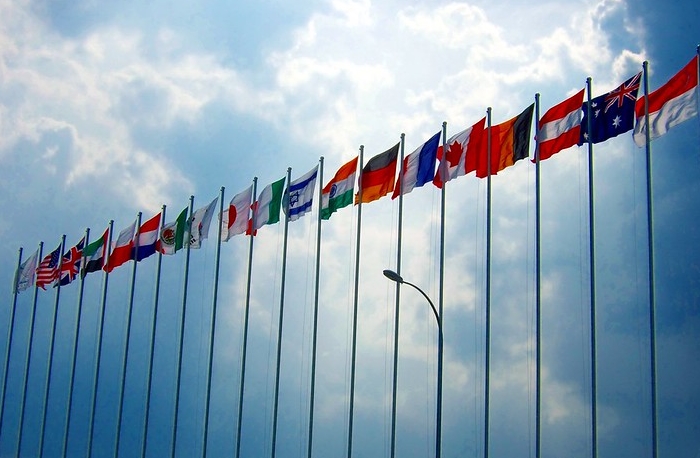By: Lauren Goodwin
Image courtesy of Flickr
Today, the World Health Organization (WHO) held its third emergency session to determine if the novel coronavirus outbreak (COVID-19) originating in Wuhan, China is a Public Health Emergency of International Concern (PHEIC). At the 2:30pm EST press conference, Dr. Tedros Adhanom Ghebreyesus, Director-General of WHO declared that the novel coronavirus is a Public Health Emergency of International Concern. This decision was not made based on the cases occurring in China, but due to the cases being identified globally, including 8 human-to-human cases of transmission. Previously, WHO held two emergency sessions on January 22 and 23, 2020 and at the time, the evidence provided did not support the declaration. The decision to declare a PHEIC is not an easy decision to make—it has a global impact on public health.
Briefly about the COVID-19 Outbreak
On December 31, 2019, WHO China Country Office reported a cluster of cases with viral pneumonia in Wuhan, China and by January 7, 2020, there were already 59 confirmed cases [1,2]. At the time, the only link between cases was visiting a local seafood market. Virus sequencing determined that this mystery illness is a novel coronavirus, one that has never been detected in humans before [3].
A breaking announcement came on January 20, 2020, when WHO announced that human-to-human transmission is possible after healthcare workers became infected [4]. By January 23, 2020, more than 600 cases have been identified and 17 deaths reported due to complications associated with infection [5].
A month after the initial notification of the cluster of cases in Wuhan, novel coronavirus has been confirmed in 7,921 cases and 170 deaths (as of 2:50pm EST 1/30/2020) [6,7]. No deaths have been reported outside of China. Cases have been identified globally, including China, United States, Japan, Canada, France, Germany, UAE, Sri Lanka, India, Nepal, Vietnam, Thailand, Cambodia, Malaysia, South Korea, Taiwan, Philippines, Macao, Singapore and Australia [6]. Outside of China, most cases have been imported, however, few cases have occurred with no recent travel history to China.
What does a Public Health Emergency of International Concern mean?
A Public Health Emergency of International Concern is a public health event that endangers international public health [8]. It is defined as an extraordinary event which is determined “to constitute a public health risk to other States through the international spread of disease; and to potentially require a coordinated international response” [8]. The public health event may require immediate international action.
Since 2005, the determination of a PHEIC has been coordinated by the International Health Regulations Emergency Committee (IHR). IHR is coordinated by WHO and represents 196 countries, including all WHO Member States, who work together for global health and security [9]. IHR requires that all participating countries have the ability to detect, assess, report and respond to public health events [9]. Under IHR, once a country is aware of a public health concern, they must assess the public health risks within 48 hours and must report the information to WHO within 24 hours [9]. Previous PHEICs have been declared: H1N1 influenza (2009), polio (2014), Ebola (2014, 2019) and Zika (2016) [9].
The proposed COVID-19 International Health Regulations Emergency Committee of members and advisors includes professionals from WHO, United States Center for Disease Control and Prevention, health agencies in France, Thailand, Korea, Canada, Japan, Australia, Senegal, Singapore, Kingdom of Saudi Arabia, China, New Zealand, Russia, Netherlands, Sweden and Italy [9]. Together, they bring their expertise and regional representation to review all known information about the outbreak to assess the risk to the rest of the world.
The declaration of a PHEIC would officially initiate a global response to combatting the novel coronavirus and allow WHO General Director Tedros Adhanom Ghebreyesus to make recommendations for the control of the spread of COVID-19 [11]. This could include the allocations of funding and resources for response, as well as the recommendation for travel security measures, such as screenings at land borders, sea ports and airport travel [11].
For the most up-to-date case count information, please visit: https://www.healthmap.org/covid-19/
References
[1] https://www.who.int/csr/don/05-january-2020-pneumonia-of-unkown-cause-china/en/
[2] https://time.com/5759289/wuhan-pneumonia-outbreak-disease/
[3] https://www.cdc.gov/coronavirus/2019-nCoV/index.html
[5] https://www.cnn.com/asia/live-news/coronavirus-outbreak-intl-hnk/index.html
[6] https://www.healthmap.org/ncov2019/
[7] https://www.nytimes.com/2020/01/30/world/asia/coronavirus-china.html
[8] https://www.who.int/ihr/procedures/pheic/en/
[9] https://www.cdc.gov/globalhealth/healthprotection/ghs/ihr/index.html
[10] https://www.who.int/ihr/procedures/novel-coronavirus-2019/ec-22012020-members/en/


